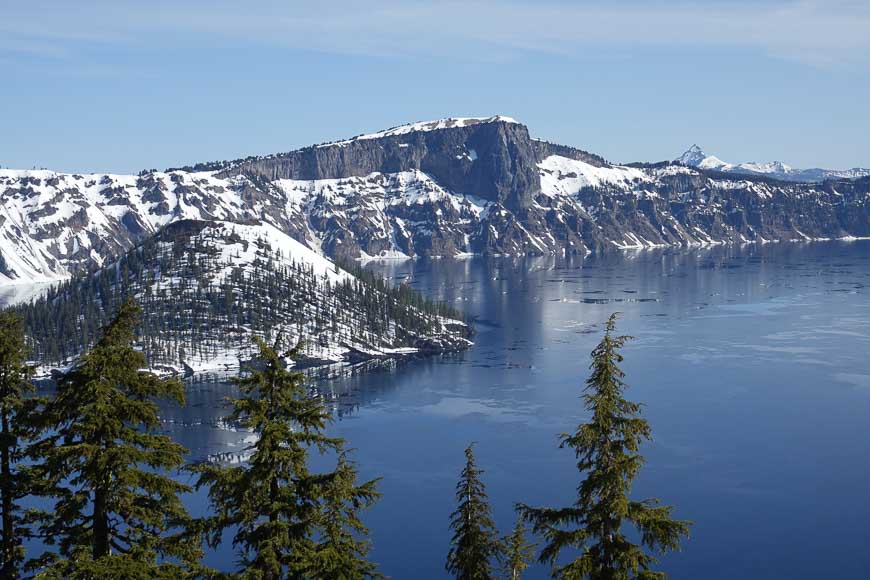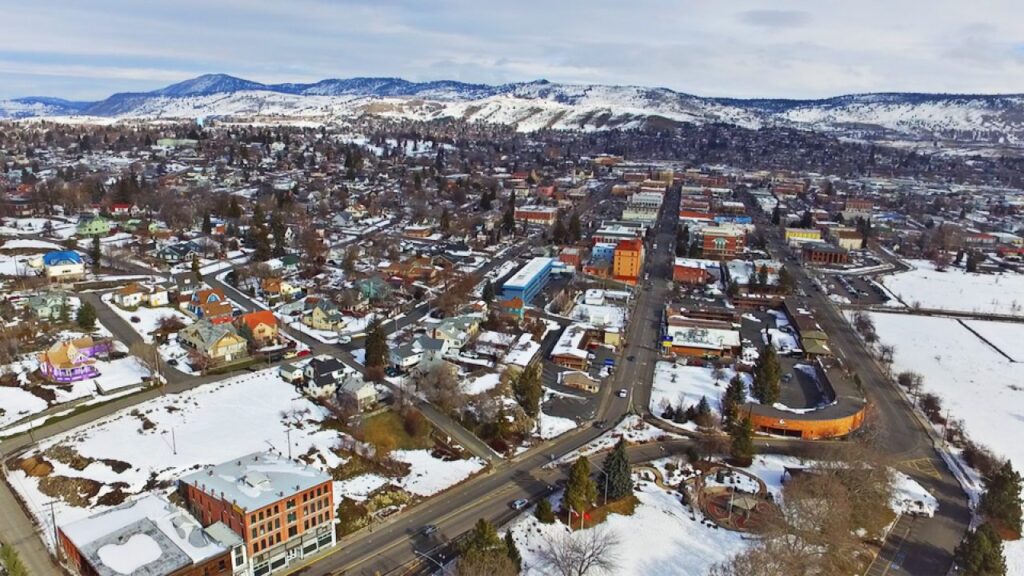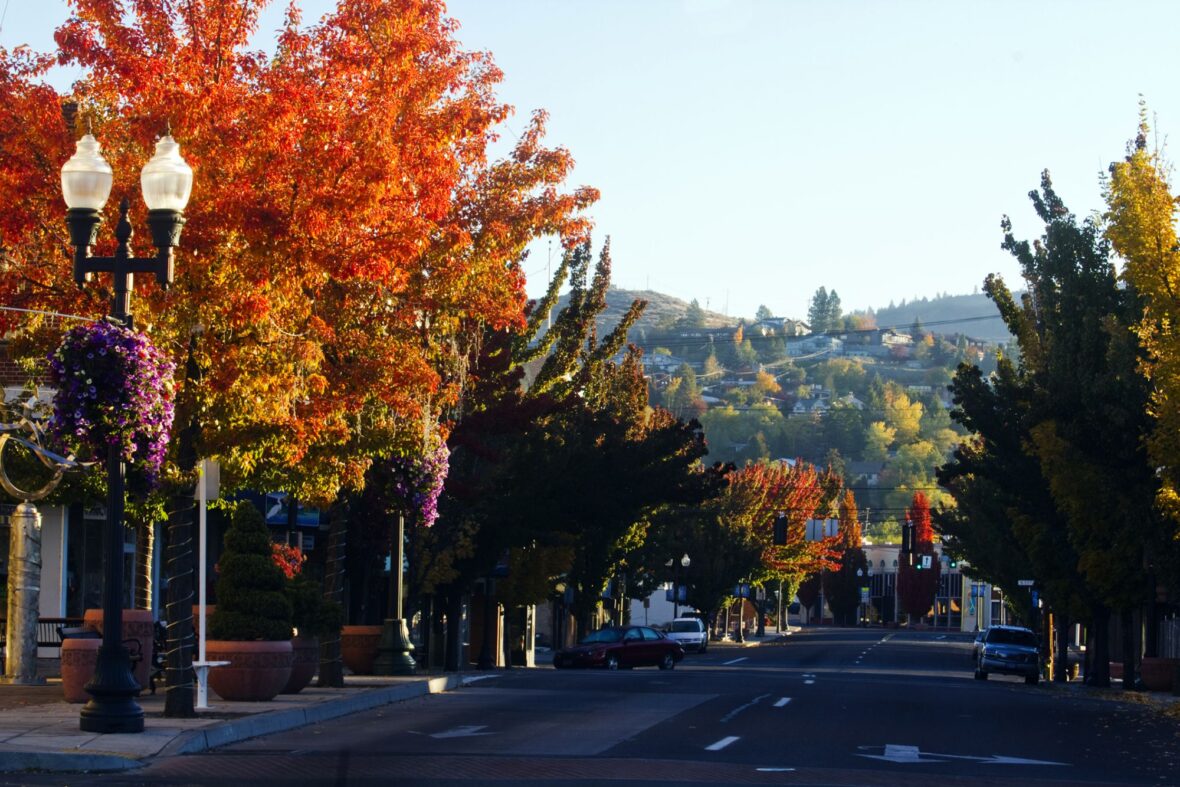Klamath Falls is a city in and the county seat of Klamath County, Oregon, United States. The city was originally called Linkville when George Nurse founded the town in 1867. Take a look below for 25 interesting and amazing facts about Klamath Falls, Oregon, United States.
1. It was named after the Link River, on whose falls the city was sited.
2. The name was changed to Klamath Falls in 1893.
3. The population was 20,840 at the 2010 census.
4. The city is on the southeastern shore of the Upper Klamath Lake and approximately 25 miles (40 km) north of the California–Oregon border.
5. Logging was Klamath Falls’s first major industry.
6. After its founding in 1867, Klamath Falls was originally named Linkville.
7. The name was changed to Klamath Falls in 1892–93.
8. The name Klamath may be a variation of the descriptive native for “people” [in Chinookan] used by the indigenous peoples of the Northwest Plateau to refer to the region. Several locatives derived from the Modoc or Achomawi: lutuami, lit: “lake dwellers”, móatakni, “tule lake dwellers”, respectively, could have also led to spelling variations that ultimately made the word what it is today.
9. No evidence suggests that the name is from Klamath origin.
10. The Klamath themselves called the region Yulalona or Iwauna, which referred to the phenomenon of the Link River flowing upstream when the south wind blew hard.

11. The Klamath name for the Link River white water falls was Tiwishkeni, or “where the falling waters rush”.
12. From this Link River white water phenomenon “Falls” was added to Klamath in its name. In reality it’s best described as rapids rather than falls. The rapids are visible a short distance below the Link River Dam, where the water flow is generally insufficient to provide water flow over the river rocks.
13. The Klamath and Modoc peoples were the first known inhabitants of the area. The Modocs’ homeland is about 20 miles (32 km) south of Klamath Falls, but when they were forced onto a reservation with their adversaries, the Klamath, a rebellion ensued and they hid out in nearby lava beds.
14. This led to the Modoc War of 1872–1873, which was a hugely expensive campaign for the US Cavalry, costing an estimated $500,000, the equivalent of over $8m in 2000. 17 Indigenous people and 83 whites were killed.
15. The Applegate Trail, which passes through the lower Klamath area, was blazed in 1846 from west to east in an attempt to provide a safer route for emigrants on the Oregon Trail.
16. The first non-Indigenous colonizer is considered to have been Wallace Baldwin, a 19-year-old civilian who drove fifty head of horses in the valley in 1852.
17. In 1867, George Nurse, named the small settlement “Linkville”, because of Link River north of Lake Ewauna.
18. The Klamath Reclamation Project began in 1906 to drain marshland and move water to allow for agriculture. With the building of the main “A” Canal, water was first made available May 22, 1907. Veterans of World War I and World War II were given homesteading opportunities on the reclaimed land.
19. During World War II, a Japanese-American internment camp, the Tule Lake War Relocation Center, was located in nearby Newell, California, and a satellite of the Camp White, Oregon, POW camp was located just on the Oregon-California border near the town of Tulelake, California. In May 1945, about 30 miles (48 km) east of Klamath Falls, (near Bly, Oregon) a Japanese Fu-Go balloon bomb killed a woman and five children on a church outing. This is said to be the only Japanese-inflicted casualty on the US mainland during the war.
20. Timber harvesting through the use of railroad was extensive in Klamath County for the first few decades of the 20th century. With the arrival of the Southern Pacific Transportation Company in 1909, Klamath Falls grew quickly from a few hundred to several thousand. Dozens of lumber mills cut fir and pine lumber, and the industry flourished until the late 1980s when the northern spotted owl and other endangered species were driving forces in changing western forest policy.

21. On September 20, 1993, a series of earthquakes struck near Klamath Falls. Many downtown buildings, including the county courthouse and the former Sacred Heart Academy and Convent, were damaged or destroyed, and two people were killed.
22. Klamath Falls is known as “Oregon’s City of Sunshine” because the area enjoys 300 days of sun per year.
23. The Klamath Falls area is a high desert and features a climate with cold snowy winters along with hot summer afternoons and cool summer nights. Under the Köppen climate classification the city’s climate type is Csb, often described as warm summer Mediterranean. Using the 0 °C (32 °F) isotherm preferred by some climatologists Klamath Falls is a Dsb climate, often described as warm summer continental Mediterranean.
24. Kingsley Field Air National Guard Base, also known as Klamath Falls Airport, was established in 1928. It is home to the 270th Air Traffic Control Squadron – 173rd Fighter Wing of the Oregon Air National Guard, stationed at Kingsley Field airbase. The squadron currently flies F-15 C/D Variants. It has the second largest runway in Oregon (10,301 by 150 feet (3,140 by 46 metres) wide) and was listed as a backup landing strip for the Space Shuttle. It is normal to hear the aircraft throughout Klamath Falls during daylight hours.
25. Amtrak, the national passenger rail system, serves Klamath Falls- located on a route originally built by the Southern Pacific Railroad – operating its Coast Starlight daily in both directions between Seattle, Washington and Los Angeles, California.




